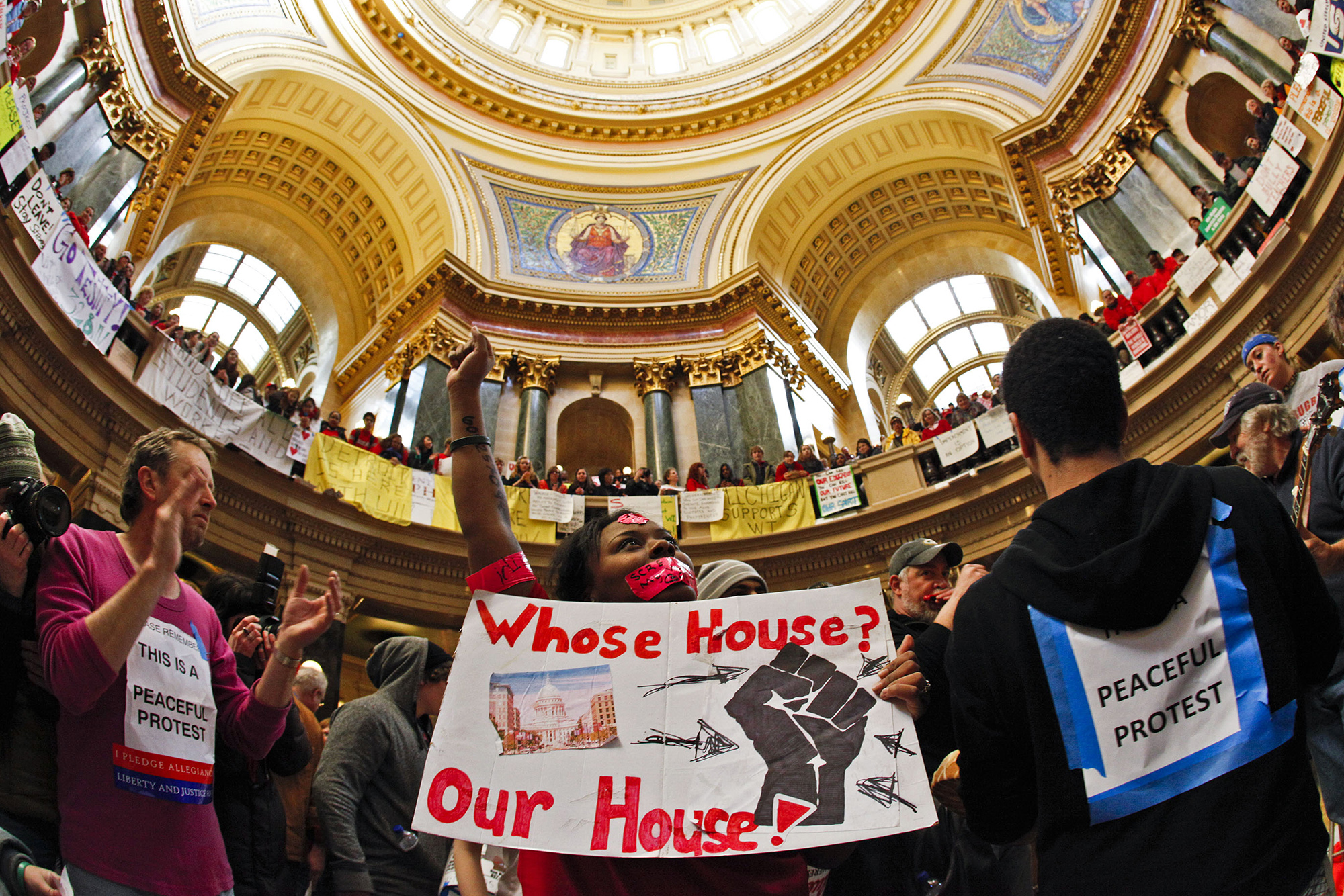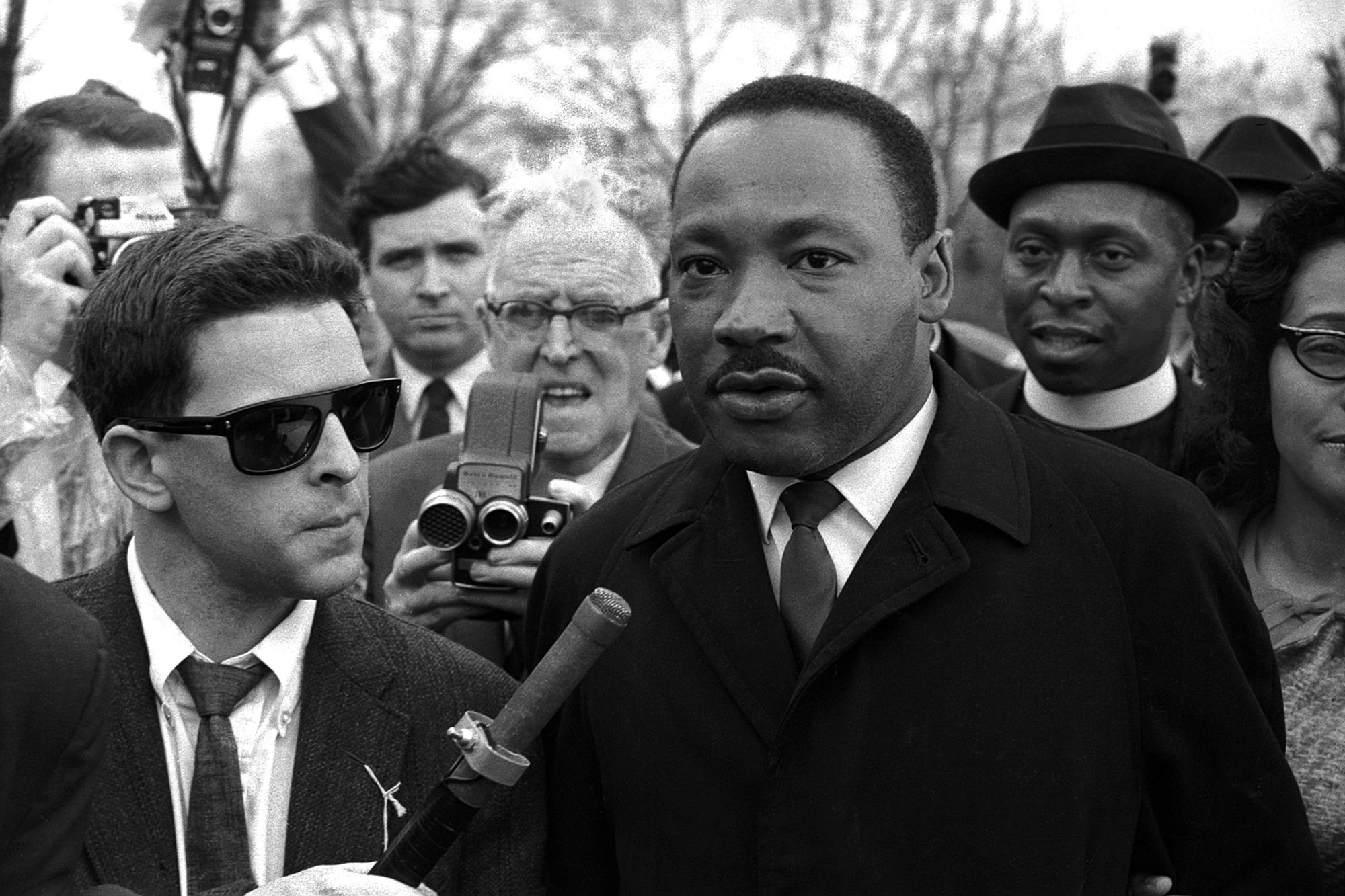At the March for Our Lives in Washington, D.C., rays of sunlight break through an unseasonably cold March, through the ordered, brutalist buildings that line Pennsylvania Avenue. Hundreds of thousands of people crowd the avenue, just as they have been crowding legislators’ phone lines and email inboxes in recent weeks. On a stage strategically positioned in line with the Capitol building, 17-year-old Cameron Kasky, a Parkland shooting survivor, delivers this proclamation:
To the leaders, skeptics, and cynics who told us to sit down and stay silent, wait your turn: Welcome to the revolution. It is a powerful and peaceful one because it is of, by, and for the young people of this country. Since this movement began some people have asked me, do you think any change is going to come from this? Look around, we are the change. Our voices are powerful, and our votes matter. We hereby promise to fix the broken system we’ve been forced into and to create a better world for the generations to come. Don’t worry, we’ve got this.
Kasky’s statement was, of course, about guns. Seventeen of his classmates and teachers had been taken from him, and from their families, friends, and their own futures, five weeks earlier by a gunman who used an automatic weapon to kill 17 people in 6 minutes and 20 seconds. But they were also taken by a system—a political system wherein a vast majority of Americans, and particularly young Americans, support policies to clamp down on gun deaths but politicians, bought off by the NRA, do not listen.
Get TalkPoverty In Your Inbox
Young people are at a tipping point. They are frustrated by a system whose cracks were etched into place by preceding generations, but have only fully metastasized for theirs. They experience suffocating levels of student debt alongside declining wages and income equality while watching companies monopolize entire industries, and sometimes even nationwide elections. Representation—actual representation—feels more like theory than reality.
People are, finally, beginning to take notice of young people’s activism to fix that system. However, many are mistaking the new wave of media coverage dedicated to young people’s political activism for young people’s newfound political activism. It’s not that young people were ever politically dormant; it’s just that their activism has existed in places where older generations aren’t used to looking: on college campuses, like the Know Your IX movement and tuition equity campaigns for undocumented students, and inside activist movements like #BlackLivesMatter and #ByeAnita and #Occupy.
Young people’s activism has existed in places where older generations aren’t used to looking
And now, increasingly, unions.
For the first time in decades, union membership is on the rise among young people. Historically, younger people have not been unionized, and their rates of union membership trail older adults by wide margins. But, just like the gun laws that are already being amended, that too is beginning to change.
According to the Economic Policy Institute (EPI), in 2017, there were 262,000 new union members in the United States. Seventy-five percent of this increase came from young people (which EPI considers those aged 34 and under, but for the purposes of this article, broadly refers to the older subset of Generation Z and most Millennials, ages 16 to 35). Young people also hold the most favorable attitudes towards labor of any generation, and their support for political parties skews heavily towards those that support pro-worker policies (like standing against “right-to-work” laws), including the Democrats and, increasingly, the Democratic Socialists of America (DSA).
But for some reason, unlike previous generations, young people’s workplace organizing isn’t seen as an integral part of their organizing, writ large. While plenty of people are documenting the rise of young people’s union membership and plenty more describing young people’s leadership in activist spaces, what’s missing is the idea that these two phenomena are actually one: Young people are turning to outside outlets that allow them to exercise their politics in the wake of a political system that, by and large, does not.
*
In a piece for Jacobin Magazine, Micah Uetricht sketches out the ebbing relationship between democracy inside and outside the workplace, and, relatedly, the relationship between economic and political democracy. To Uetricht—a sociology graduate student who focuses on labor, member of the DSA, and associate editor at Jacobin—activism is activism, whether it takes place at the workplace or outside of it. “It’s a relatively recent development that we think of what happens at work as some kind of separate sphere of our lives in general,” he says. He adds: “Young people understand that and don’t like living in a dictatorship in the place where they spend 8 or 10 hours of their day.”
Uetricht experienced something similar at his first job out of college, when he worked as a cashier at an airport making minimum wage. He says he and his co-workers were treated as less than human on a daily basis, and they eventually decided to unionize, granting him a newfound sense of agency: “I had never felt as powerless as I did when I was a cashier making minimum wage. Conversely, I had never felt as powerful as I did when I joined with my co-workers, confronted my boss, and won.”
That fact—that unionization campaigns often center around not simply better wages or benefits, but a sense that your voice will be heard—often goes misunderstood by those who are not connected to the labor movement. But for Uetricht, who went on to become a union organizer, the idea of worker voice, even if it’s to voice complaints about stagnant pay or subpar health benefits, is not simply one benefit of unions; it is the benefit. “The thing that you learn immediately as an organizer,” he tells me, “is that even in low-wage workplaces, the number one issue people have with their workplaces is not their low wages but a lack of respect.”
A lack of respect is also primarily driving young people’s frustration with the political system. When Kasky, the 17-year-old Parkland survivor, spoke at the March for Our Lives, he said “our voices are powerful, and our votes matter.” He said that in contrast to the status quo, in which young people’s voices are not seen as powerful, nor their votes. And, looking at recent history, it’s not hard to understand why that might be Kasky’s understanding of the status quo. Young people’s votes were spurned by an electoral college that favors rural, sparse areas, disproportionately discounting the large numbers of young people who lived in cities in 2016. Their ideas of stronger restrictions on guns, reigning in big banks, and support for the rights of LGBTQ people, immigrants, people of color, and people of varying religious views have been continually overpowered by older generations and special interests.
Seen through that lens, it’s no wonder young people have found working inside the U.S. political system ineffective, and, quite frankly, not worth their time. Instead, young people have redirected their activism toward different kinds of outlets, where their efforts may actually bring about tangible results. Outlets like unions.
What does this mean for the labor movement? A workplace is, at the most fundamental level, a microcosm of the political system. There are those who hold power, the bosses, and those who don’t, the workers. Over time, the balance of power ebbs and flows; when unions are strong, the balance shifts more heavily to the workers, and when unions are weak, the balance favors the bosses. When unions are powerful, workers have something akin to a voice in the direction of their workplace. And when unions are at their most powerful, workers have something akin to a voice in the direction of their country, a counterbalance to special interest groups like ALEC or the U.S. Chamber of Commerce.
*
Julia Ackerly is working to build unions up to that level. Now 27, she’s worked on Democratic campaigns for most of her adult life: She worked as a field organizer and regional field director for the Bernie Sanders campaign in the 2016 primary elections, and then for Larry Krasner’s bid to be Philadelphia’s District Attorney (DA), a race that drew national attention for how Krasner sought to use the DA position to enact a progressive vision for the criminal justice system. Ackerly has always worked on campaigns that worked closely with organized labor. But she had never been in a union herself.
That changed when the Campaign Workers’ Guild (CWG) formed. The idea behind the CWG is pretty simple: It hopes to unionize campaign staffers, who experience harsh working conditions where poor pay and benefits and long hours run rampant, justified by managers as sacrifices for an important cause. CWG is currently organizing campaigns one-by-one: Its first successful organizing campaign was that of Randy Bryce, the candidate hoping to win House Speaker Paul Ryan’s Congressional seat, and it’s organized 10 more campaigns since, for a total of 11 as of March 2018. But it ultimately hopes to organize entire parties’ campaign staffs at once in the future.
“Everyone needs an outlet for activism.”
Ackerly, who helps organize campaign staffs and is now a dues-paying member of CWG herself, says that having a collective ability to be heard and respected in the workplace is a “very motivating factor towards unionization campaigns.” She singles out creating protocol and reporting structures for sexual harassment and discrimination as one of the biggest motivations staff members have for organizing. Which, tellingly, is also the one of the biggest activist movements dominating living room and water cooler conversations across the country as the #MeToo movement continues.
Young people dominate the junior staffs on campaigns and have also made up a significant portion of the driving force behind recently organized campaign staffs, according to Ackerly. Jake Johnston, the Vice President of Organizing for the Non-Profit Professional Employees Union (NPEU) (which includes some members of the TalkPoverty staff), has similarly seen young people take the lead at the organizations that have recently organized under NPEU, and at NPEU itself.
For Johnston, collective action has implicit ties to activism, writ large. “The reality is that our political system really has cut out a significant part of this country. I think there’s clearly a rejection of the status quo, and yet there are so few avenues to try and change that,” he says. “Whether it’s joining the DSA, joining a union, joining an advocacy campaign, or joining an electoral campaign, people are trying to change that. Everyone needs an outlet for activism.”
That’s true for young people in particular. For far too long, they’ve been on the receiving end of an economic and political system that does not work for them, while being denied the opportunity to change that system.
Whether it’s students like Cameron Kasky shouting about the NRA into a microphone that reverberates from the Capitol to the White House, young people like Julia Ackerly organizing an industry that has never been unionized before, or activists like Micah Uetricht organizing his own workplace, young people are refusing to take part in a political system that has consistently and methodically drowned out their voice. Instead, they’ve taken their voices elsewhere, to outlets like unions and activist movements where—finally—their voices are being heard.











